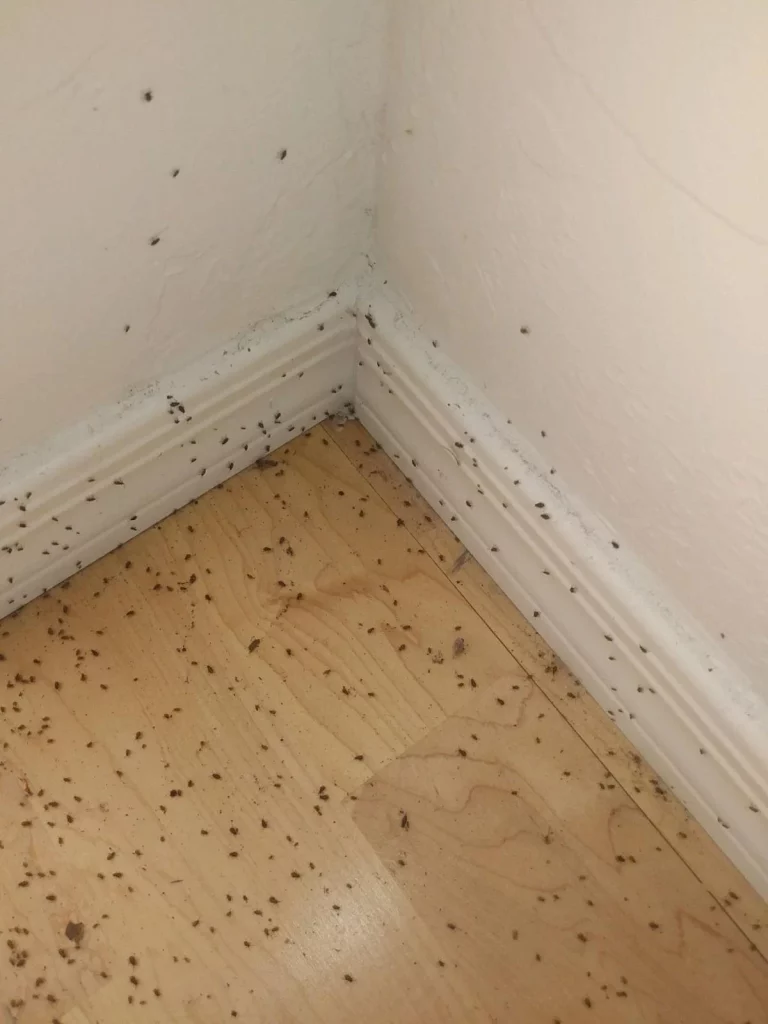It’s a common scenario for homeowners: you spot tiny bugs crawling on your walls or congregating on your ceiling. These uninvited guests can be a nuisance and even a cause for concern. In this article, we will delve into the world of these tiny bugs, identifying common culprits and providing insights on how to deal with them.

Identifying the Intruders
Getting to Know the Tiny Bugs
Before you can address the issue of tiny bugs on your walls and ceiling, it’s crucial to identify the type of insects you’re dealing with.
1. Ants:
- Tiny ants may occasionally venture indoors, seeking food and shelter. They often form visible trails and are relatively easy to recognize.
2. Aphids:
- Aphids are tiny, soft-bodied insects that may infest your indoor plants and, in some cases, find their way onto walls and ceilings.
3. Springtails:
- Springtails are minuscule, jumping insects that thrive in damp conditions. They are often found in bathrooms or kitchens.
4. Fruit Flies:
- Fruit flies, as their name suggests, are attracted to ripe or decaying fruit. They are tiny and tend to hover around food sources.
5. Silverfish:
- Silverfish are small, wingless insects known for their silvery appearance. They are often found in damp, dark areas.
Reasons for Their Presence
Understanding the Attraction
Tiny bugs can make their way into your home for a variety of reasons. Knowing the factors that attract them can help you prevent infestations.
1. Food Sources:
- Leftover food, spilled crumbs, and overripe fruit are attractive to many tiny bugs, especially ants and fruit flies.
2. Moisture:
- Damp or humid conditions, such as those found in bathrooms and kitchens, can draw in springtails and silverfish.
3. Plants:
- Aphids may come indoors on infested plants, and they can quickly spread to walls and ceilings.
Addressing the Issue
Effective Strategies for Bug Control
Once you’ve identified the type of tiny bugs you’re dealing with and the reason for their presence, it’s time to take action to address the issue.
1. Remove Attractive Conditions:
- Start by eliminating what attracts these bugs. Clean up spilled food, fix plumbing leaks, and keep indoor plants healthy and pest-free.
2. Seal Entry Points:
- Seal any cracks or openings that may serve as entry points for these insects. This includes gaps around windows, doors, and pipes.
3. Use Natural Remedies:
- For minor infestations, consider natural remedies like vinegar or essential oils to deter bugs from specific areas.
4. Insecticides:
- If the problem persists, you may need to use insecticides or contact a pest control professional for more severe infestations.
Read too: How To Fix Bubble In Ceiling
Preventive Measures
Keeping Tiny Bugs at Bay
To prevent future invasions of tiny bugs on your walls and ceiling, consider the following preventive measures:
1. Regular Cleaning:
- Maintain a clean and hygienic living environment, reducing the attraction for these insects.
2. Proper Storage:
- Store food in airtight containers, repair leaky plumbing promptly, and keep indoor plants free of pests.
3. Routine Inspection:
- Regularly inspect your home for potential entry points and seal them as needed.
Conclusion:
Tiny bugs on your walls and ceiling can be a nuisance, but understanding their identity and attraction factors is the first step in dealing with them effectively. By implementing preventive measures and taking appropriate action, you can keep your home bug-free and enjoy a more pleasant living environment. Don’t let these tiny intruders take over; take control of your space and maintain a bug-free home.